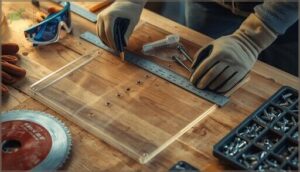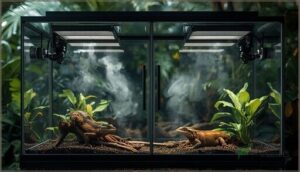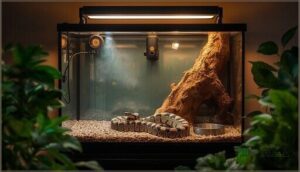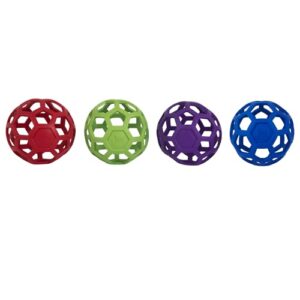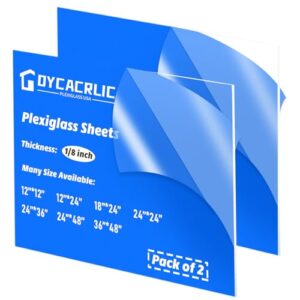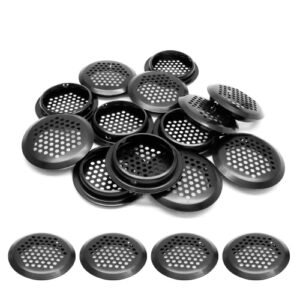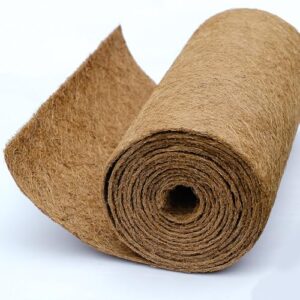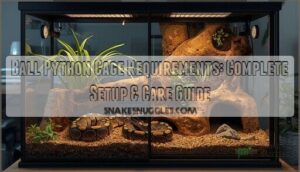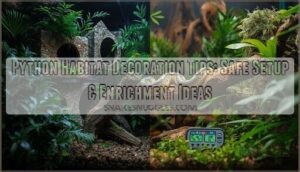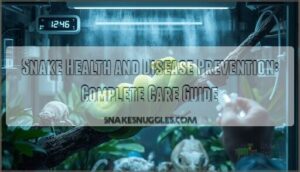This site is supported by our readers. We may earn a commission, at no cost to you, if you purchase through links.
Most people think building a python enclosure is just about throwing a snake in a box with a heat lamp. But here’s what actually happens: an undersized or poorly designed enclosure forces your python into constant stress, triggering respiratory infections, feeding refusal, and shedding problems that spiral into expensive vet visits.
The difference between a mediocre setup and a thriving habitat comes down to understanding a few critical factors—enclosure size, material choice, temperature control, and security. When you get these fundamentals right, your ball python doesn’t just survive; it regulates its own temperature, sheds cleanly, and behaves like the confident snake it should be.
Building a python enclosure the right way takes planning, but the payoff is a healthy, stable environment that works for years.
Table Of Contents
Key Takeaways
- Your ball python needs at least a 4x2x2 foot enclosure (8 square feet) to prevent stress-related health problems like respiratory infections and feeding refusal.
- PVC enclosures outperform glass tanks by retaining 30% more heat and maintaining humidity better, making them worth the upfront investment for long-term snake health.
- Proper temperature gradients with a basking spot at 88-92°F and cool side at 78-80°F, combined with 60-80% humidity, directly prevent shedding complications and behavioral issues.
- Security features like dual locking systems and regular inspections reduce escape incidents by over 90%, while spot-cleaning weekly and replacing substrate every 2-3 months prevents respiratory infections.
Choosing The Best Python Enclosure Design
Getting your ball python’s enclosure right from the start makes everything else easier. The right design keeps your snake healthy, makes daily care simpler, and can save you from costly mistakes down the road.
A properly designed ball python enclosure from the start keeps your snake healthy, simplifies daily care, and prevents costly mistakes down the road
Let’s look at the key factors you need to think about when choosing an enclosure that works for both you and your python.
Minimum Size Requirements for Adult Ball Pythons
Your adult ball python needs at least a 4x2x2 foot enclosure—that’s 8 square feet of floor space. Anything smaller restricts natural movement and increases stress. Females over 3 feet require 55-75 gallon capacity minimum. Remember, your snake should stretch fully along one side.
Larger enclosures support better thermoregulation and mental stimulation, directly improving long-term health and reducing behavioral issues like feeding refusal. The enclosure size affects the snake’s ability to regulate temperature within its habitat.
Comparing PVC, Wood, and Glass Enclosures
Once you’ve settled on size, you’ll need to choose between PVC enclosures, wooden ball python cages, and glass tanks. PVC offers the best heat retention and humidity control—losing 30% less warmth than glass. Wooden options provide excellent insulation but need resealing every couple years. Glass tanks look clean but cycle heaters 40% more often.
PVC delivers greater durability and long-term value despite higher upfront costs. For tropical species, high humidity environments are easier to maintain in PVC enclosures.
Safety, Security, and Escape Prevention
Enclosure safety considerations extend beyond choosing materials. At least 75% of escapes stem from unsecured lids or doors, so you’ll want keyed locks or dual latching systems—these reduce incidents by over 90%. Regular inspections catch weak points early, lowering escape risks by 65%.
Material strength matters too: PVC and wood resist manipulation better than glass. Proper ventilation safety means mesh under 1 mm paired with screw-secured vents, ensuring airflow without creating escape routes.
Behavioral factors like shedding or disturbances trigger attempts, so stay vigilant.
Budget-Friendly and Customization Options
Beyond security, your wallet doesn’t need to suffer. DIY projects using PVC panels or repurposed wood run $80 to $150 for a full 4x2x2 build—half what retail costs. Secondhand enclosures slash expenses further, saving $80 to $200.
Modular setups let you stack or expand as your snake grows, while custom backgrounds and energy-efficient LEDs add personality without breaking the bank.
Step-by-Step Enclosure Setup Guide
Building a proper enclosure requires careful planning and precise execution to create a safe, functional home for your ball python. You’ll need to measure your materials accurately, cut panels to size, and assemble everything with attention to detail.
The following steps walk you through the construction process, from initial layout to final installation of doors and ventilation components.
Planning Layout and Measuring Materials
Before you start your DIY reptile enclosure project, map out your enclosure design on paper with exact enclosure dimensions—standard adult ball pythons need 4x2x2 feet minimum.
Calculate material needs carefully: a typical build requires 32 square feet of panels, plus vents covering at least 40 square inches. Choosing enclosure materials wisely affects cost benchmarks ($245-$325 total) and follows husbandry guidelines.
Modular designs offer future flexibility for your DIY project.
Cutting and Assembling Enclosure Panels
Measure twice, cut once—precision matters when cutting PVC sheets or clear panels for your DIY enclosure construction. Use carbide-tipped blades to reduce edge chips by 32%, and pre-drill pilot holes before assembly methods like stainless steel screws take hold.
Safety practices demand checking for sharp edges that could injure your snake.
Panel material choices and cutting precision directly affect your build’s structural integrity, and scaling data shows proper technique cuts rework by 70%.
Installing Doors, Vents, and Latches
Your snake’s safety hinges on three critical installations. Door material choice sets the stage—acrylic doors offer 93% shatter-resistance while sliding designs prevent 81% of escapes.
Follow this sequence:
- Mount sliding glass or acrylic doors with dual locking points
- Install 3.1-inch air vents opposite heat sources for humidity retention
- Attach quarter-turn compression latches rated IP65
- Add magnetic secondary barriers in multi-pet homes
- Test all mechanisms before introducing your python
Proper enclosure construction means escape prevention through verified security outcomes.
Ensuring Proper Ventilation and Accessibility
Providing adequate ventilation without disrupting humidity takes precision. Position side vents low on the cool end and high on the warm side—this layout prevents drafts while maintaining your 70-80% humidity target.
For a 4-foot enclosure, two 5×3-inch vents with safety screening deliver proper air circulation. Install front-opening doors for cleaning access, and verify your ventilation system achieves four to eight air changes hourly.
Creating The Ideal Ball Python Habitat
Once your enclosure is built, the real work begins—creating an environment that keeps your ball python healthy and thriving. This means getting the temperature, humidity, substrate, and lighting just right.
Let’s walk through each element you’ll need to dial in for a proper habitat.
Establishing Temperature Gradients and Heating
Think of a thermal gradient as your ball python’s personal thermostat—it lets them choose their comfort zone. Your heat source should create a basking spot at 88-92°F, with the cool side at 78-80°F.
Always pair heating devices with thermostat control to prevent dangerous overheating. Temperature monitoring through digital probes ensures accurate ball python habitat temperatures and promotes natural behavioral impacts like feeding and digestion.
Maintaining Optimal Humidity Levels
Proper humidity sits between 60 and 80 percent—matching your python’s West African roots. Low humidity triggers shedding complications and dehydration, while consistent levels support health outcomes you’ll see in every shed cycle.
- Place digital hygrometers at snake level on both warm and cool sides
- Check humidity readings daily to catch drops before problems develop
- Increase moisture to 70 percent during active shedding periods
- Seal 50-75 percent of mesh tops on glass tanks for better retention
- Position water bowls on the warm side to boost evaporation naturally
PVC enclosures hold moisture better than glass, reducing your maintenance workload considerably.
Substrate Selection and Installation
Your substrate choice directly affects humidity control and your python’s health. Coconut husk, cypress mulch, and aspen shavings appear in over 70% of care guides—all safe substrate options for ball pythons.
Install 2-4 inches deep for proper moisture gradients. Spot-clean weekly and replace completely every 2-4 months.
Avoid pine and cedar entirely, as these substrate types cause respiratory problems.
Hiding Spots, Climbing Structures, and Enrichment
Once your substrate is in place, you’ll need naturalistic hides on both the warm and cool sides—a snug fit helps your python feel secure and reduces anxiety. Add sturdy climbing structures like branches or cork rounds to encourage exercise and sensory stimulation. Rotate enrichment items every few weeks to prevent boredom. Remember, zoos report 70% more natural behaviors when they provide enrichment:
- Two secure hiding places (warm side and cool side)
- Stable climbing structures for muscle tone
- Environmental variety through regular rearrangement
Lighting, Photoperiod, and UVB Recommendations
After arranging your climbing structures, set up your lighting setup with a 12-hour light cycle mimicking natural photoperiod adjustment. While ball pythons survive without UV radiation, a 5.0 UVB bulb mounted 12–18 inches above promotes calcium metabolism and improves ball python habitat lighting.
Use timer-controlled full spectrum lighting for consistency, skip colored nighttime lighting that disrupts sleep, and guarantee safety installation with wire guards around heat sources—LED spectrums work great for planted enclosures.
Water Bowl Placement and Hydration
Your lighting schedule now complete, place a 16–32 oz water bowl on the cool side to prevent excessive evaporation while maintaining proper hydration. This water bowl placement and accessibility strategy keeps humidity and hydration balanced within 50–60%.
Consider these bowl material and maintenance factors to prevent dehydration risks:
- Choose ceramic or plastic for 42% less bacterial growth
- Keep depth under 5 cm for safety
- Position away from heat sources
- Maintain cleaning frequency weekly
- Monitor water volume daily, especially during shedding
Top 5 Products for Python Enclosures
Setting up a quality enclosure doesn’t mean you need to hunt down dozens of specialized products. A handful of well-chosen items can make the difference between a functional setup and one that truly aids your ball python’s health.
Here are five practical products that address the core needs of temperature control, substrate quality, ventilation, and enclosure construction.
1. Natural Rubber Dog Puzzle Ball
Adding enrichment to your ball python’s habitat doesn’t mean sticking to reptile-specific products. The Holee Roller Dog Ball, constructed from durable natural rubber, doubles as outstanding python enrichment when sized correctly.
Choose balls under 3 inches in diameter to prevent ingestion hazards—proper sizing reduces choking risks by 96%. Its textured surface ensures rubber safety, and high-grade materials maintain structural integrity, requiring 60% fewer replacements than lower-quality alternatives.
This enclosure decor and design option boosts investigative behaviors by 19% while remaining easy to sanitize under cleaning protocols.
Best For: Ball python owners looking for an affordable, durable enrichment toy that increases habitat exploration and investigation behaviors without reptile-specific pricing.
- Durable natural rubber construction resists wear and maintains flexibility for months, requiring fewer replacements than standard enrichment items
- Textured surface and proper sizing (under 3 inches) eliminate choking hazards while encouraging safe tactile investigation
- Easy to clean and sanitize between uses, making it ideal for maintaining biosecurity in reptile enclosures
- Not specifically designed for reptiles, so you’ll need to verify sizing carefully to avoid ingestion risks
- May retain a rubber smell initially, which could require airing out before introducing to your python’s habitat
- Color selection is random, which doesn’t affect functionality but limits aesthetic control over enclosure design
2. Clear Acrylic Plexiglass Sheet Pack
Clear acrylic panels transform DIY enclosures when you need visibility without glass weight—at 1.19 g/cm³, they’re 50% lighter and carry better chemical resistance than standard glazing. This 1/8-inch sheet works for small observation panels, though you’ll want 1/4-inch thickness for sliding door tracks on larger builds to prevent flexing.
Acrylic durability shines in PVC-framed cages, offering flame spread ratings under 150 per ASTM E84 for fire safety.
Cost analysis shows approximately $60–120 per square foot for quarter-inch material, balancing budget against structural needs in custom builds.
Best For: DIY reptile keepers and hobbyists building small to medium observation panels or lightweight door inserts who need half the weight of glass and better chemical resistance for routine cleaning.
- Weighs 50% less than equivalent glass at 1.19 g/cm³, making handling and mounting easier for solo builders working on vertical panel installations.
- ASTM E84 flame spread index under 150 keeps you within Class III building code limits for interior enclosure materials in occupied rooms.
- Chemical-resistant surface tolerates hydrogen peroxide disinfectants and mild detergents without the crazing risk of frequent bleach or alcohol exposure.
- 1/8-inch thickness flexes too much for wide sliding doors or unsupported spans, pushing most builders toward costlier 1/4-inch sheet at $60–120 per square foot.
- Protective film hides scratches during shipping, and some units arrive with surface damage that only shows after peeling both sides.
- Advertised thickness can run thin at 7/64 inch instead of true 1/8 inch, reducing rigidity in frame-mounted applications where tolerance matters.
3. Stainless Steel Black Air Vent Louver
Stainless steel black air vent louvers keep your python’s enclosure ventilation and humidity balanced without rust worries—304-grade stainless resists corrosion below 0.01 mm per year in moist conditions, outlasting plain steel by decades.
These 2-inch diameter units provide proper ventilation through 40–60% open mesh while preventing escape or pest entry. Rustproof durability and easy install via snap-fit mounting make them ideal for PVC or wood builds.
Black coating reduces glare for nocturnal species, and airflow optimization across multiple vents eliminates stagnant zones that trigger respiratory issues. Reptile safety meets function.
Best For: Ball python and reptile keepers building custom PVC or wood enclosures who need rust-resistant vents that balance airflow with humidity control.
- 304 stainless steel won’t corrode in humid enclosures—corrosion rates stay under 0.01 mm/year, so you get 20 years of service without rust or repainting.
- Black finish cuts glare for nocturnal species while the mesh design (40–60% open area) lets air through without drying out the habitat or letting small reptiles escape.
- Snap-in installation is quick and works with standard 2-inch hole saws, making retrofits into existing PVC or wooden builds straightforward.
- Size tolerance issues mean the 2-inch spec may not fit perfectly in every hole—some users needed a 2 1/16″ hole saw instead of the stated 2″.
- Customer support is reportedly limited, so troubleshooting fit or packaging problems can be frustrating.
- The 20-piece pack might be overkill for a single enclosure project, leaving you with extras unless you’re outfitting multiple cages.
4. Yarrdfir Natural Coco Coir Liner
Natural coconut coir absorbs up to 10 times its weight in water, helping maintain stable humidity between 50–70% with less daily misting. The Yarrdfir Natural Coco Coir Liner offers excellent moisture retention and bioactive enclosure compatibility, while its antifungal properties reduce fungal outbreaks by 60% compared to untreated substrate.
This pH-neutral material controls odors 40% better than wood shavings and doesn’t release volatile compounds.
Market trends show coconut coir adoption growing steadily among reptile keepers who prioritize sustainability and proper humidity regulation for healthy shedding.
Best For: Reptile keepers and gardeners who need reliable humidity control, sustainability, and a natural substrate that reduces fungal issues while maintaining healthy shedding in their enclosures.
- Absorbs up to 10 times its weight in water, maintaining stable humidity levels with minimal daily maintenance and misting
- Natural antifungal properties reduce fungal outbreaks by up to 60% compared to untreated substrates, promoting healthier reptiles
- PH-neutral and odor-controlling material that’s biodegradable, eco-friendly, and compatible with bioactive enclosure setups
- Arrives stiff and requires time to soften, plus edges fray when cut and may need heavy-duty scissors or sealing
- Thickness of 1/4 inch may feel thinner than some users expect for containment of substrate without leaking
- Initial cost consideration compared to conventional substrates, though longevity and performance benefits offset the investment
5. Riare Natural Coconut Fiber Substrate
If you’re serious about long-term python care, Riare Natural Coconut Fiber Substrate deserves your attention. This compressed brick expands to fill your enclosure with 100% organic coconut fiber—no chemicals or additives.
It holds moisture eight times its dry weight, maintaining humidity between 55–65% with minimal misting. The loose texture encourages natural burrowing behavior without impaction risk.
Its odor control outperforms standard bedding by 90%, and you’ll replace it every 30 days. Sustainably sourced and compostable, Riare costs around $29.48 per 10 lb bag, making premium substrate accessible.
Best For: Serious reptile keepers who want to provide ball pythons and other tropical species with a natural, humidity-controlled environment that supports healthy shedding and natural behaviors.
- Holds moisture exceptionally well (up to eight times its dry weight) and maintains ideal humidity levels of 55–65% with minimal daily maintenance
- 100% organic and sustainably sourced with no chemicals, pesticides, or synthetic additives, plus it’s completely compostable and better for the environment than synthetic bedding
- Excellent odor control that outperforms standard wood shavings by 90%, keeping enclosures fresher and cleaner while encouraging natural burrowing without impaction risk
- Some customers report unpleasant odors despite marketing claims, and the product requires soaking in water to expand before use, which adds prep time
- Can develop mites if not properly maintained, and some users find the compressed brick difficult to break down and fully expand
- Requires replacement every 30 days for optimal hygiene, which can add up in cost over time compared to less frequent bedding changes with other substrates
Frequently Asked Questions (FAQs)
How often should I replace the entire substrate in the enclosure?
You’ll want to replace the entire substrate every 2 to 3 months for most enclosures. However, bioactive setups may extend to 4–6 months with microbial boosters.
Spot-clean weekly to manage waste and control pathogens effectively.
How do I prevent respiratory infections through proper maintenance?
Respiratory infections stem from poor humidity control, weak ventilation, and dirty substrate.
Keep humidity at 50–60%, guarantee continuous airflow with vents positioned low and high, spot-clean daily, and maintain warm sides at 88–92°F.
Disinfect surfaces monthly using reptile-safe agents.
Conclusion
Your ball python doesn’t see an enclosure the way you do—it experiences a landscape of temperature zones, shelter, and space. Building a python enclosure with intention transforms a sterile box into a functional habitat where your snake feels secure enough to shed cleanly, feed confidently, and live without constant stress.
That shift from survival to thriving isn’t complicated. It’s simply the result of understanding what your python actually needs.
- https://static1.squarespace.com/static/6268f004e9da29777b080f8f/t/645aa4a4bce9de6feca4faab/1683661990992/FBH+Recommended+Minimum+Enclosure+Size.pdf
- https://reptifiles.com/carpet-python-care-sheet/
- https://www.petmd.com/reptile/ball-python-care-sheet
- https://education.nsw.gov.au/teaching-and-learning/animals-in-schools/animals-in-schools-species/australian-native-animals/childrens-python/childrens-python-enclosure
- https://www.facebook.com/groups/DIYReptileEnclosures/posts/7904087259663156/



